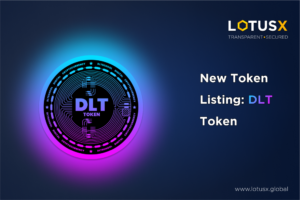The world of technology is constantly evolving, and with each new phase of development, we witness innovations that redefine how we interact with the digital realm. One such paradigm shift is the advent of Web3, a decentralized and user-centric version of the internet that aims to empower individuals and give them greater control over their online experiences. At the heart of this transformation lies cryptocurrencies, which play a pivotal role in shaping the future of Web3. In this blog post, we will explore how cryptocurrencies are driving the development of Web3 and changing the landscape of the digital world.
Cryptocurrencies: The Backbone of Web3
Why are cryptos addressed as the backbone of Web3? Let’s find out.
1. Decentralization and Ownership
Web3 envisions a digital landscape where individuals have full ownership and control over their online presence, data, and assets. Cryptocurrencies, built on blockchain technology, are fundamental to achieving this vision. Blockchain, as a decentralized ledger, ensures that no central authority has the power to manipulate transactions or data. This empowers users to transact and interact online with greater trust and autonomy.
2. Smart Contracts
Smart contracts are self-executing agreements with the terms of the contract directly written into code. They eliminate the need for intermediaries, reducing costs and increasing efficiency in various online processes. Cryptocurrencies, such as Ethereum’s Ether (ETH), provide the fuel required to execute these smart contracts. This opens up a world of possibilities for decentralized applications (dApps) and services, from decentralized finance (DeFi) to non-fungible tokens (NFTs).
3. Tokenization of Assets
Cryptocurrencies facilitate tokenizing real-world assets, turning them into digital assets represented on the blockchain. This tokenization process enables fractional ownership and easy transfer of assets like real estate, art, and stocks. Web3 platforms that utilize cryptocurrencies allow users to invest in these assets, expanding investment opportunities globally easily. You can read more about this here.
Web3: Bridging the Gap Between Virtual and Physical
Web3 is not just about decentralization; it’s also about bridging the gap between the virtual and physical worlds. Cryptocurrencies play a crucial role by enabling the creation and exchange of digital representations of real-world assets. Here’s how:
1. NFTs and Digital Ownership
Non-fungible tokens (NFTs) are unique digital assets representing ownership of a specific item, piece of content, or artwork. These tokens, often powered by cryptocurrencies like Ethereum, allow creators and collectors to prove ownership and authenticity in the digital realm. This concept revolutionizes the art, gaming, and entertainment industries by allowing creators to monetize their digital creations.
2. Virtual Real Estate and Virtual Economies
Cryptocurrencies are the lifeblood of virtual economies within Web3. Users can buy, sell, and trade virtual assets and land using cryptocurrencies in virtual worlds and metaverse platforms. This creates real economic value within these digital spaces, blurring the line between the virtual and physical worlds.
Challenges and Opportunities
While cryptocurrencies play a central role in Web3’s development, they face scalability, regulatory hurdles, and environmental concerns. These challenges need to be addressed to ensure the sustainable growth of Web3. However, the opportunities presented by the intersection of cryptocurrencies and Web3 are immense:
1. Financial Inclusion
Web3 and cryptocurrencies can bring financial services to the unbanked and underbanked populations globally. Individuals can access banking, lending, and investment opportunities through blockchain technology without relying on traditional financial institutions.
2. Decentralized Governance
Web3 platforms often rely on decentralized autonomous organizations (DAOs) to make decisions and govern the network. These DAOs use cryptocurrency-based voting mechanisms to give users a say in the platform’s development and direction, fostering a more inclusive and democratic internet.
Conclusion
Cryptocurrencies are the catalysts of Web3, powering its decentralization, enabling smart contracts and asset tokenization, and bridging the virtual and physical worlds. As Web3 continues to evolve, cryptocurrencies will remain at its core, driving innovation and reshaping the digital landscape. Embracing this transformative technology and addressing its challenges will pave the way for a more open, inclusive, and user-centric internet of the future. Stay tuned for the exciting developments that lie ahead in Web3 and cryptocurrencies.




